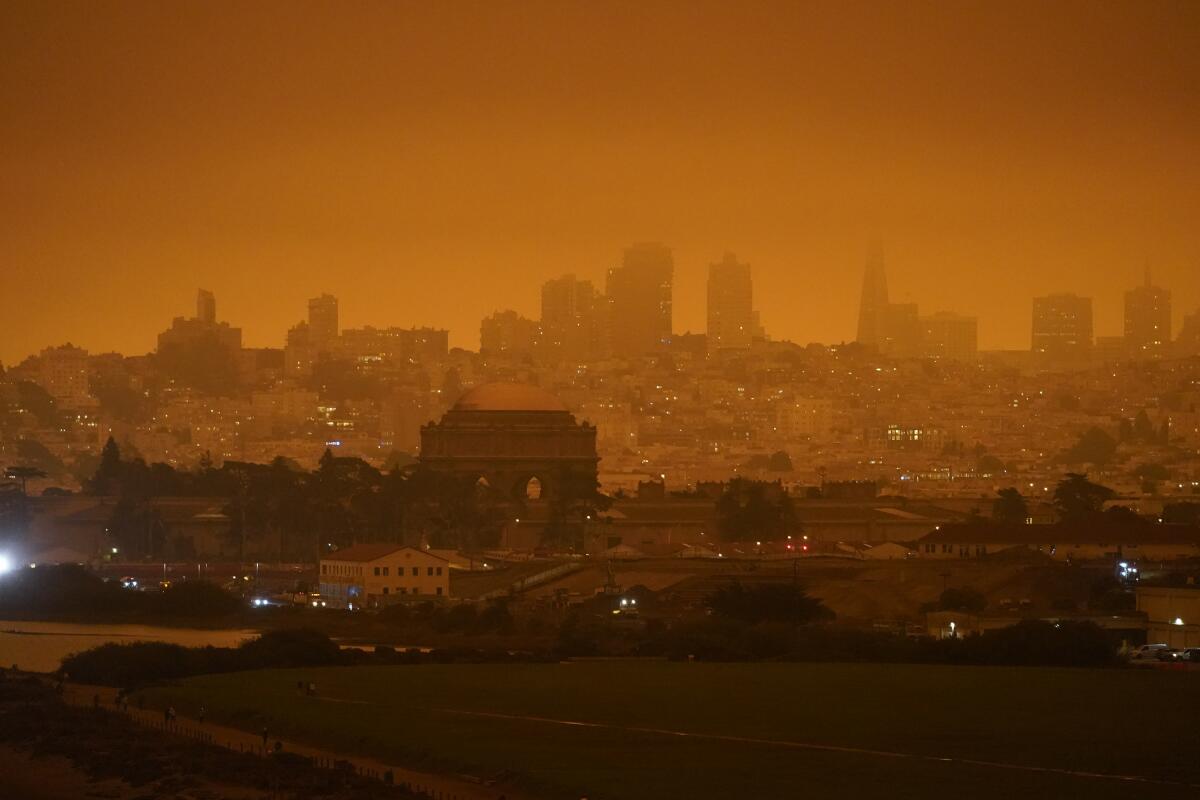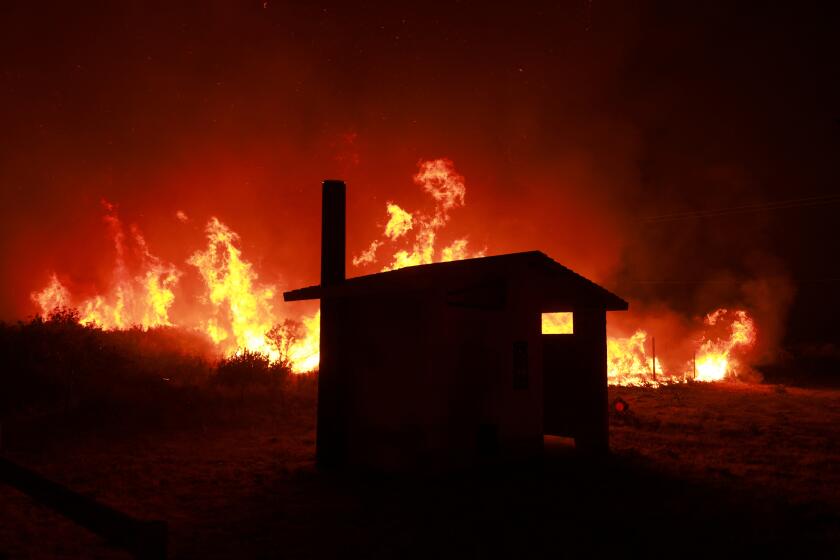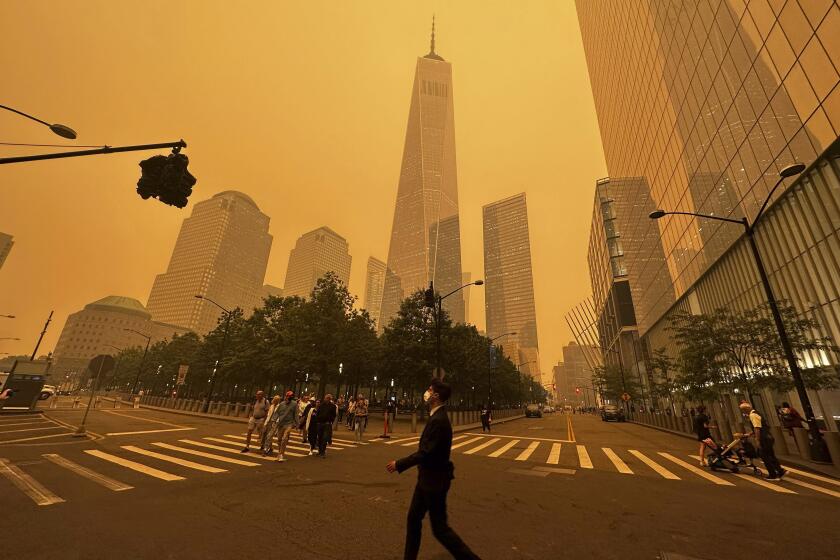Wildfire smoke kills thousands of Californians a year. It doesn’t have to be so deadly

- Share via
When wildfires rage, the immediate threat is obvious — but smoke from the fires actually kills far more people than the flames do. It doesn’t have to be so deadly.
As fires become more frequent, smoke is leading to a public health crisis, likely contributing to more than 52,000 premature deaths across California from 2008 to 2018, we recently found. Those deaths from wildfire smoke are associated with an economic impact of more than $430 billion. In years with lots of fire activity — 2017 and 2018, for example — wildfire smoke contributed to more than 10,000 deaths annually in California. For comparison, about 4,000 people die in California from traffic accidents each year.
Gov. Gavin Newsom and Insurance Commissioner Ricardo Lara have floated proposals to lure home insurance companies back as climate change increases wildfire risks.
Wildfire risk and severity have grown as the climate has changed and as more people have moved into the edges of wildland areas, increasing the risk that they will start fires. Years of putting out all wildfires has also kept small fires from clearing out undergrowth, meaning the fires that do escape have more fuel to burn. This all adds up to more smoke hurting more people.
Efforts to prevent and manage wildfires will not be enough to avoid such casualties, but there are steps that officials can take to adapt to this new reality and protect Californians from smoke.
A smoky haze from fires in Canada has cast a pallor over the Northeast U.S. that’s all too familiar to those on the West Coast. Get used to these images as the horror of a changed climate come to life.
Decades of air pollution research have shown how exposure to fine particulate matter can harm a person’s long-term health. These small particles, each only a fraction of the width of a human hair, come from a variety of sources, such as vehicle tailpipes and factory emissions, as well as from other sources, including fires. The particles are so tiny, they can travel deep into the lungs and even enter the bloodstream.
Inhaling fine particulates can cause short-term respiratory problems in vulnerable populations, such as people with asthma and older adults. In part by causing inflammation, it also contributes to chronic diseases, including heart disease, asthma, decreases in lung function and diabetes.
Wildfire smoke contains a stew of chemicals that seems to be uniquely toxic — and potentially more harmful to human respiratory health than the typical particulates in urban environments. A study from UC Davis showed that wildfire smoke caused more inflammation in the lungs of rats than did particles from other sources such as cars and industry.
This threat spreads far beyond the fires themselves. Most wildfires are in rural, forested areas, but smoke can travel hundreds or thousands of miles, making the health effects widespread through population centers. California’s Rough fire of 2015 burned more than 150,000 acres in a mostly rural area of Fresno County, but the biggest spikes in mortality that year were in a more populated area of the county and throughout the San Joaquin Valley. In 2018, the year the town of Paradise and several other communities burned, wildfire smoke may have killed as many as 12,000 Californians prematurely.
There are a few things that we can do as individuals to protect ourselves from this threat. Californians can check a resource such as the EPA and Forest Service’s AirNow Fire and Smoke Map or the PurpleAir map to get a sense of whether it’s safe to be outdoors, and if there is smoke in the area we can wear a mask outdoors and avoid exercising outside. We can use certified air purifiers in our homes when air quality is poor.
The larger lessons from the new understanding of wildfire smoke are for government leaders. Our federal, state and local governments need to invest in coordinated forest management, wildland-urban interface management and climate change mitigation, all of which could yield significant public health benefits through reducing the frequency and severity of wildfires and smoke exposure. And we need to invest in protecting Californians from now-inevitable wildfire smoke, using adaptations such as air filtration for schools and other public buildings.
Leaders should acknowledge that although it’s too late to prevent this crisis, it’s not too late to save lives.
Rachel Connolly is project director for air quality and environmental equity research with the Luskin Center for Innovation at UCLA. Michael Jerrett is a professor of environmental health sciences at UCLA. This article was produced in partnership with the Conversation.
More to Read
A cure for the common opinion
Get thought-provoking perspectives with our weekly newsletter.
You may occasionally receive promotional content from the Los Angeles Times.








